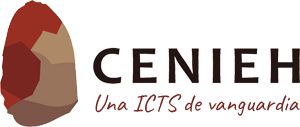Service: Electron Spin Resonance (ESR)
Platforms
Fixlab
Techniques
No
techniques found
Electron Spin Resonance (ESR) dating is radiation exposure (trapped charge) dating method based on the evaluation of the effects of natural radioactivity on different materials (quartz, feldspars, silex, teeth, speleothems...) over time. Minerals exposed to ionizing radiations (gamma and cosmic rays, alpha and beta particles) emitted from radioactive isotopes (U, Th, K) in the sample and its surroundings act as natural dosimeters. This process induces movements within the electronic structure of minerals causing some electrical charges to be trapped in the crystal defects of the mineral, forming an entity known as the paramagnetic centre. These centres give rise to a specific ESR signal whose intensity is directly proportional to the number of trapped charges, i.e. the amount of radiation absorbed by the mineral (Equivalent Dose, DE). A numerical age can be calculated from the estimation of the DE and the average dose absorbed (D) by the mineral in one year generated by the already-mentioned radioactive elements. In the case of D is constant over time, the ESR age (T) is calculated by the following equation: T= DE/D. DE expressed in Gray (Gy) and D expressed in µGy/a or Gy/ka. For ESR dating of quartz, a prerequisite is the existence of a resetting mechanism in nature to zero the ESR signal (bleaching) and thus the geological clock. The Electron Spin Resonance (ESR) laboratory is mainly devoted to dating geological and/or archaeological materials such as tooth enamel or optically bleached quartz grains extracted from sediment. Occasionally, it also carries out work in dosimetry and characterization of modern or old geo-materials.
ESR measurements are performed with two spectrometers: (1) Bruker EMXmicro 6/1 (X-band) equipped to work from room (300 K) to liquid nitrogen temperature (77 K); (2) Bruker Elexsys E500 (Q and X band) equipped to work from room (300 K) to liquid helium temperature (4 K). The stability of the experimental conditions is ensured by a ThermoFlex3500 chiller connected to the EMXmicro spectrometer and a Rieden PC100.02-KE chiller connected to the Elexsys E500 spectrometer. Both chillers control and precisely stabilize the temperature (±0.1 °C) of the water cooling the magnets. An air conditioning system regulates the temperature of the room. A programmable goniometer ensures tube rotations inside the resonator with a precise angular resolution and reproducibility which allows checking angular variation of the ESR signal. The natural radioactivity of geological/archaeological samples is assessed with two Canberra high-purity germanium detectors (Extended Range Coaxial –Xtra and well-type detectors). Sample irradiations are performed using a Gammacell-1000 irradiator with a 137Cs source (approx. dose rate: 8 Gy/min) (Best Theratronics). Sample preparation is carried out in a dark laboratory under controlled lighting conditions to obtain pure quartz and feldspars from sediments or separate different dental tissues from fossil teeth. This laboratory is fully equipped (saws, dentist's drills, agate mortars, sieves, mills, hot plates, scales, magnetic separator, etc.) to optimally treat samples prior to chemical preparation. The chemical preparation laboratory is equipped with fume hoods to prevent hazardous and odorous chemical exposure. It is also furnished with all other laboratory material necessary for acid attacks or the separation of minerals through dense liquids. In order to bleach quartz samples, it is used a Hönle solar simulator (UVACube400 + SOL500). CENIEH has all of the necessary field material to carry out sampling campaigns: PVC tubes, Minigrip® Anti UV opaque bags, hammer, GPS, tape measures and two Canberra portable gamma spectrometers: an Inspector1000 multichannel analyzer connected to a NaI(Tl) probe and an Inspector1000 multichannel analyzer connected to a LaBr3(Ce) probe.
Fields of application
Anthropology
Archaeology
Geoarchaeology
Geochemistry
Geology
Heritage science (cultural heritage discipline)
Paleoanthropology
Methods


